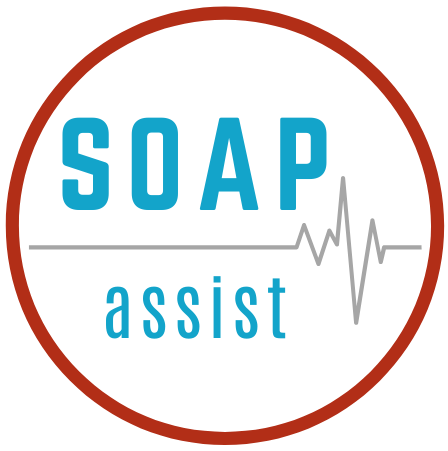The assessment and plan section of the medical soap note is perhaps the most important section of the SOAP note. A well-constructed assessment and plan section usually takes the longest to complete. This is where all of the data detailed in the note is summarized into a comprehensive assessment and plan. If written well, other providers typically find this section the most helpful. Reviewing the assessment and plan gives a quick summary of what is going on with the patient. In this article, we will discuss the first part of the assessment and plan: the one-liner.
Depending on the clinical context, the assessment and plan is often started with a one-liner. As discussed in other blog posts, the one-liner is a brief summary of the patient. It is not always one sentence, but it is always brief. The one-liner should be as specific as possible. It should convey the major reasons for the patient encounter. For other providers reading the SOAP note documentation from top to bottom, the one liner helps to summarize the clinical context before detailing the plan.
In order to better understand the important components of a one-liner, let’s look at an example. A one-liner could read something like this: “The patient is a 65 year old male with a history of coronary artery disease, 30 pack-year smoking history, hypertension and diabetes admitted to the hospital with the diagnosis of unstable angina after 3 hours of worsening chest pain in the setting of recent coronary stenting and medication noncompliance.”
The one-liner starts with a patient identifier. It not only provides clinically important information (i.e. age), but also helps paint a picture of the patient in the reader’s mind.
Clinically relevant medical history is identified. Many new providers and students have difficulty identifying what this entails. In our example, noting that the patient also has seasonal allergic rhinitis would not be helpful because it is not relevant to the reason for the encounter. Patients may also have an abundance of clinically relevant history. In this case, it is prudent to choose which medical history is most relevant and eliminate the history that will likely not change management. In this example, adding that the patient’s father died of a heart attack at age 55 would likely be unnecessary. Family history of coronary disease is not a modifiable risk factor and the patient is already known to have coronary artery disease. Hence, adding this piece of history would likely not be helpful at this point. Finally, if the patient has no significant medical history related to the problem, this can be simply stated as such.
After detailing the clinically relevant history, it is important to state the diagnosis as specifically as possible. In our example, “unstable angina” is more specific than “chest pain”. This tells the reader that we are dealing with an acute coronary syndrome and that other causes of chest pain are likely not at play. A brief defense of the diagnosis can be made as well. Our example uses the time course to justify the diagnosis: “3 hours of worsening chest pain”.
The final part of our one-liner example clues the reader into what might have led to this problem. Stating, “…in the setting of recent coronary stenting and medication noncompliance” can suggest to the reader that there is the possibility of an in-stent thrombosis. In-stent thromboses are usually not subtle and are more likely to present with ST-segment elevation and troponin elevation. However, this detail is helpful because it informs the reader that, even if it did not occur yet, an in-stent thrombosis is a very concerning aspect of the patient’s history.
While these are all helpful components of the one-liner, it is also important to remember that the one-liner can be structured several different ways. Instead of mentioning coronary stenting at the end, it could read “…with a history of coronary artery disease status post recent coronary stenting, smoking 30 pack-years…”. The reader still has a good sense for the clinical context for the patient.
The importance of the one-liner cannot be overstated. It ties the entire SOAP note together. It summarizes the most important details already mentioned above and foreshadows the problem list.
When it comes to SOAP documentation, the one-liner is very difficult to create using a SOAP note template. In fact, the one-liner is a distilled version of many of the aspects of a medical provider’s training. We have discussed that a good one-liner contains clinically relevant history, a specific diagnosis and a defense of that diagnosis. These elements are very nuanced for each patient encounter and cannot be accounted for through the use of a SOAP note template. Rather, they rely on the training of the individual provider to identify and create the clinically relevant narrative of that particular encounter.
Disclaimer: SOAPassist curated templates are created for use by licensed medical providers. While they are examples of what a provider might document, their intended purpose is to provide a starting point for documentation and do not constitute medical recommendations.

